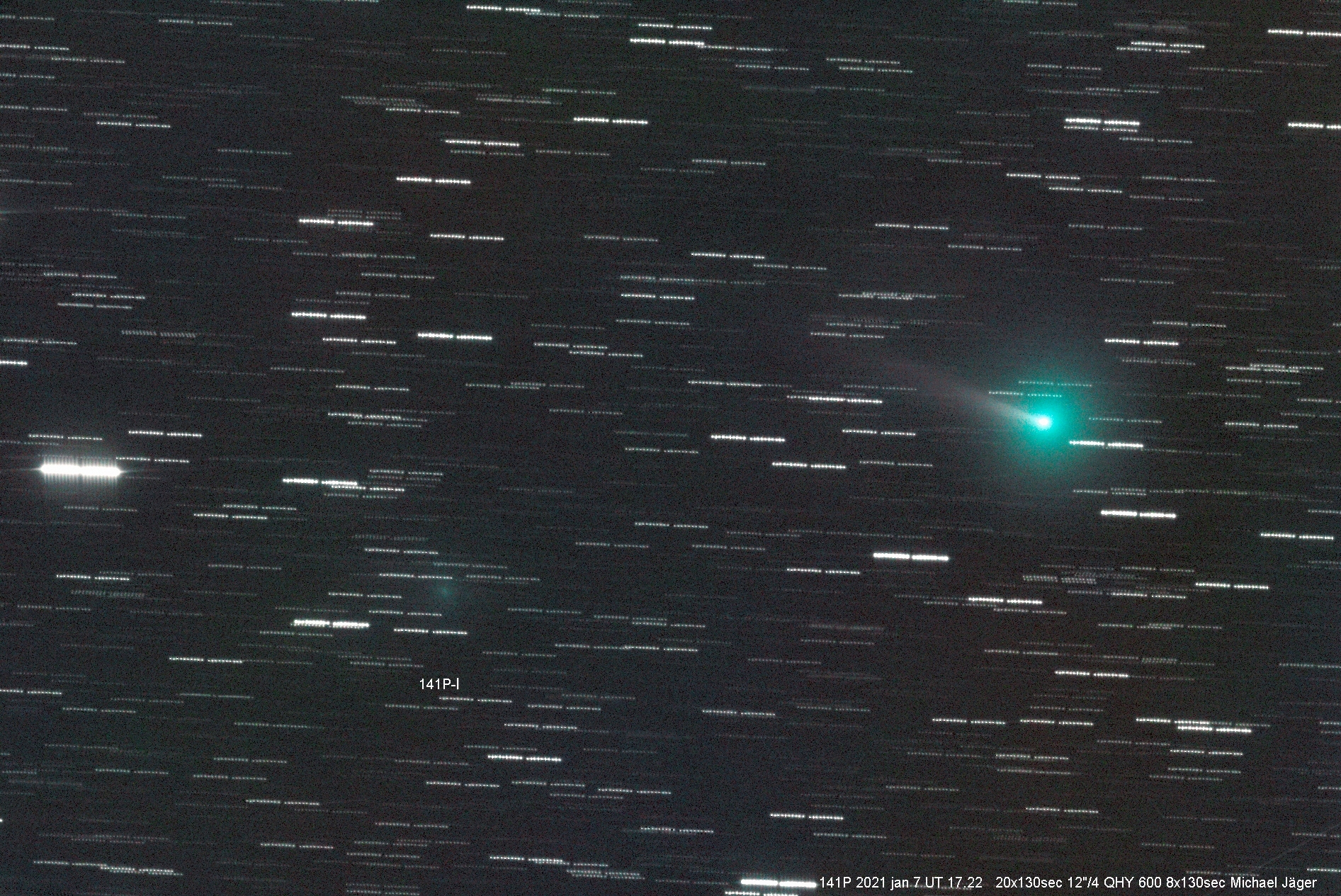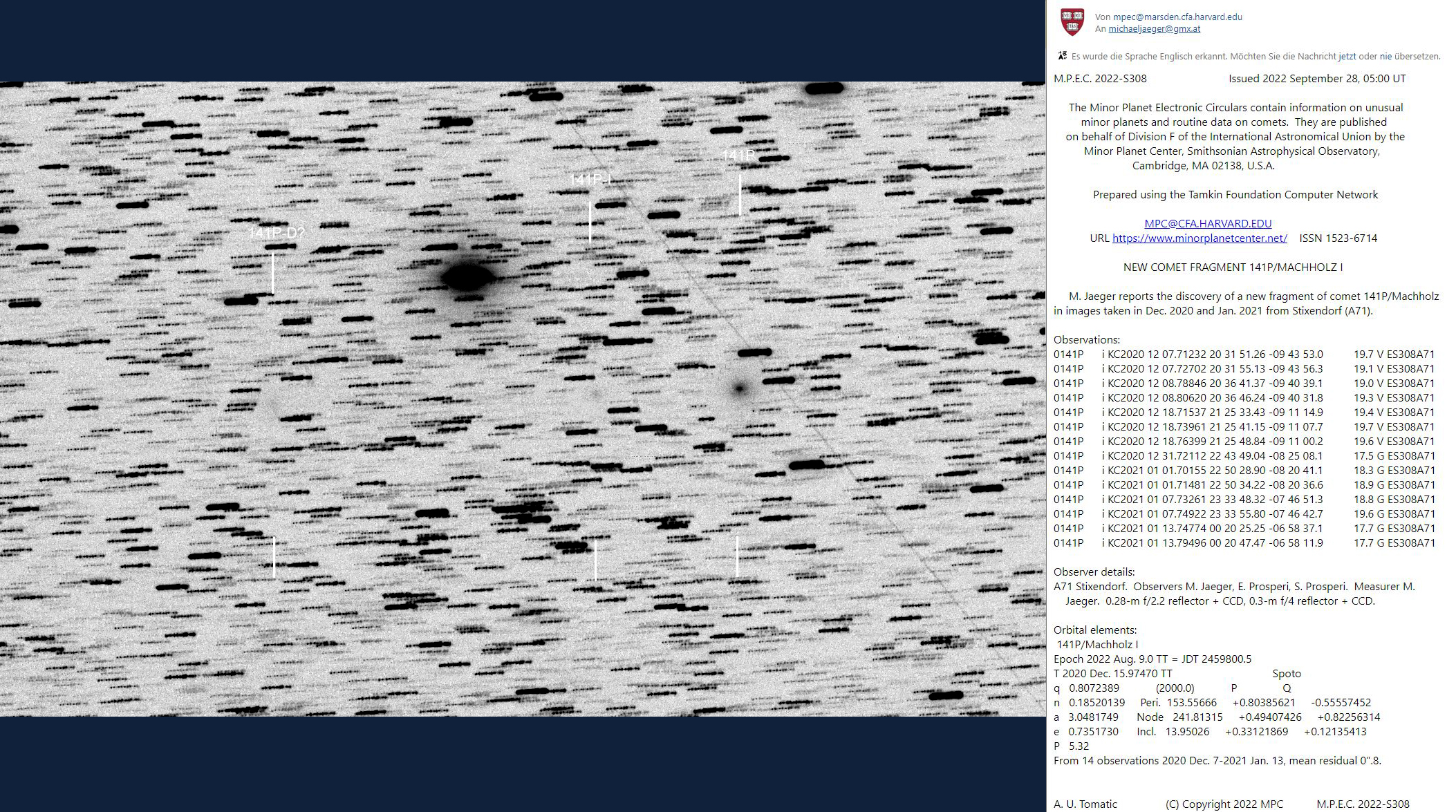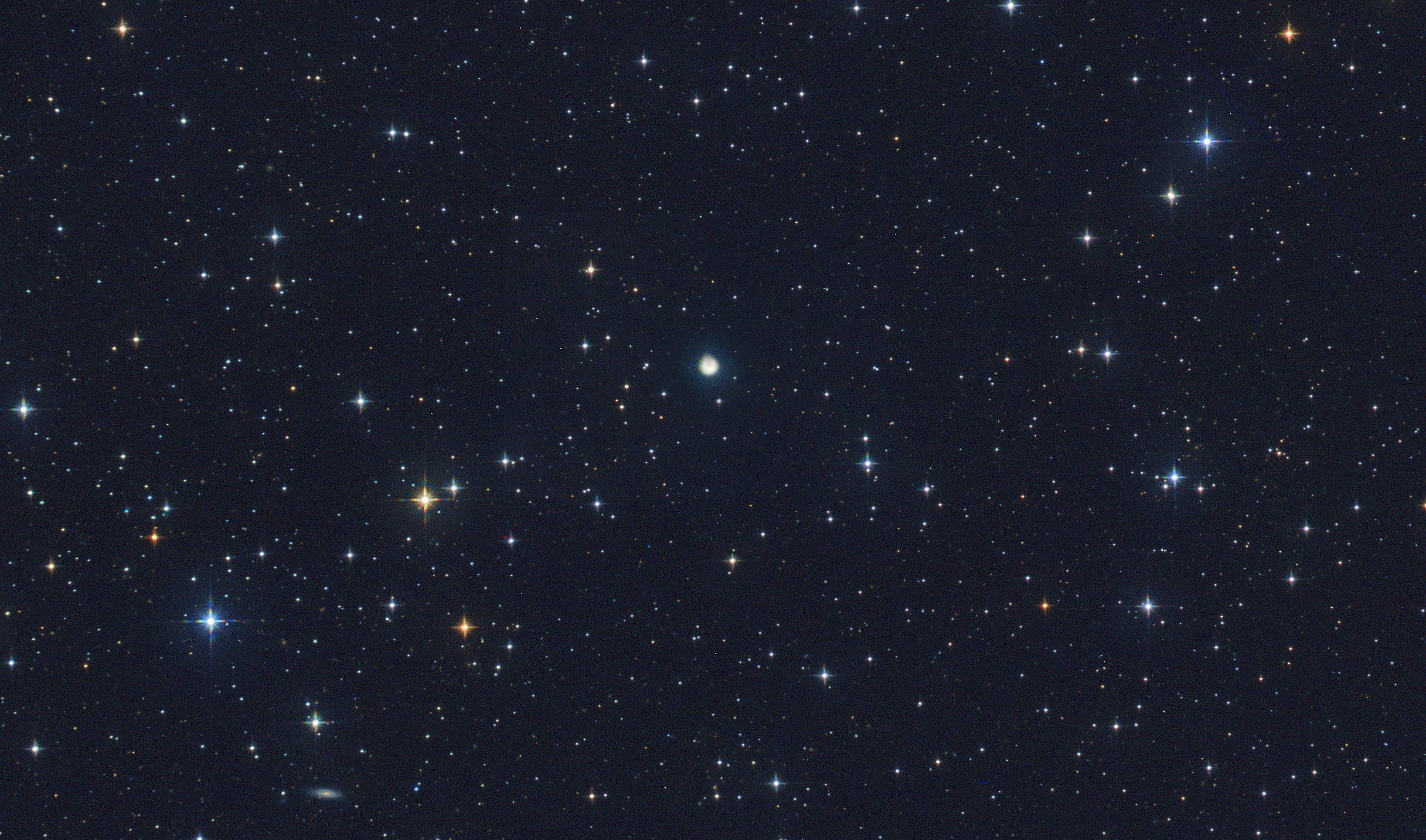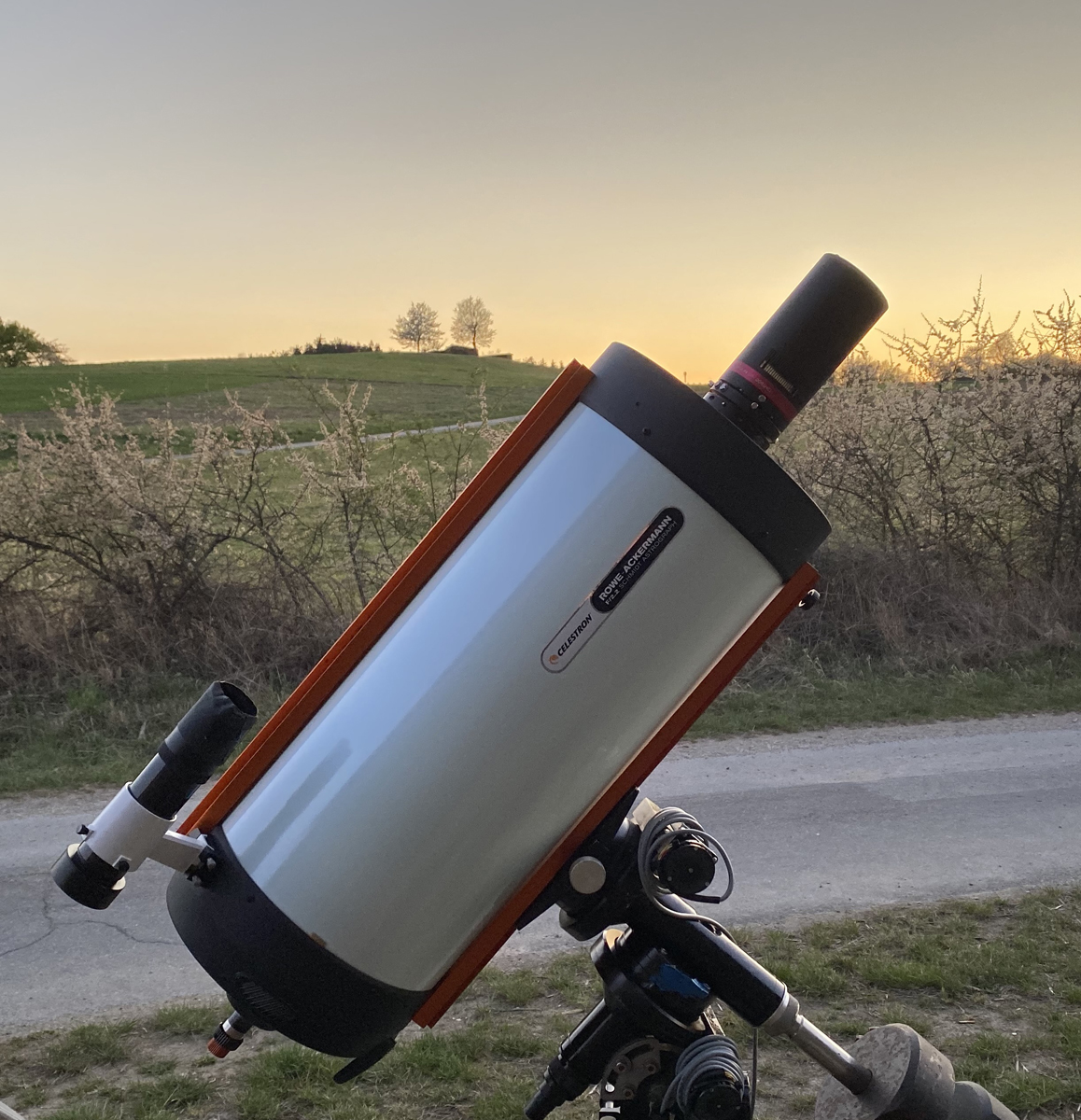QHYCCD: Hello Michael! We have followed you and your works for so long time, very happy to have this opportunity to learn more about you, a master of comet photography. Please feel free to share your story with us!
First, please make a self-introduction for us.
Michael: My interest in comets started when I was a teenager. In 1973 there was a report of a bright comet. His name was Kohoutek. I really wanted to see him at the time, but this was not possible in the city of Vienna.
Nevertheless, I couldn’t get away from this topic. So far I have photographed more than 1100 comets. That’s a lot, so far only 4000 have been discovered. I live more than 100 kilometers from Vienna in the country and have a reasonably good night sky here.
Now retired – I worked for a daily newspaper for 40 years – my full concentration is on the hobby of astronomy. I also lead a regional astronomy club with 130 members.
QHYCCD: When did you begin your astrophotography?
Michael: I started astrophotography in 1982. At that time we were still working on film material that cannot be compared with today’s possibilities The first objects I made were comets. For a long time, Deep Sky never really interested me.
QHYCCD: What does astrophotography mean to you? Why do you love it?
Michael: In the early days my love for comet photography had a good reason. In the 1980s there was almost no literature with comet images. So I decided to explore the nature of comets using my own images. I was exotic in Central Europe in the 1980s. There weren’t many people who photographed comets.
QHYCCD: Could you share with us the most impressive experience you had during these years?
Michael: My first highlight was the observation of a disconnection event at Halley’s Comet on January 10, 1986. Yes, you remember such dates.
 (Halley’s Comet taken on April 15, 1986, with an 8″ Schmidt camera and black and white and color film)
(Halley’s Comet taken on April 15, 1986, with an 8″ Schmidt camera and black and white and color film)
In 1994 I made the first discovery of a comet fragment at 141P Machholz, followed by my biggest discovery to date.
 (captured with an 11″ astrograph and a QHY600)
(captured with an 11″ astrograph and a QHY600)
In 1998 I found a periodic comet in the constellation Auriga: 290P/Jager. In recent years I have made further discoveries of comet fragments at 73P/Schwassmann-Wachmann and at 157P/Tritton. The QHY600 played a role in the second comet.
 (captured with an 11″ astrograph and a QHY600)
(captured with an 11″ astrograph and a QHY600)
QHYCCD: I see that many of your works are captured with QHY600, how long have you used this camera? Besides QHY600, do you have any other QHY products? How do you feel about them/it?
Michael: I was one of the first in Europe who use this camera. That was in summer 2020. I really wanted this camera because Comet Neowise was approaching and I wanted a full-frame CMOS Cam.
The camera has proven itself so far. I have taken thousands of images of more than 100 comets.
QHYCCD: You have many excellent works. Could you share with us your favorite one and the reasons?
Michael: My favorite image is what I just took. Let others decide what my best image is.
 (C/2020 F3 Neowise – 2020 Jul 13 UT 21.40 mosaic Leica-Apo-Telyt 280mm/f4.0 and QHY 600 2x15min RGB)
(C/2020 F3 Neowise – 2020 Jul 13 UT 21.40 mosaic Leica-Apo-Telyt 280mm/f4.0 and QHY 600 2x15min RGB)
 (C/2022 E3 ZTF —— 2023 feb 9 UT 19.40 11″ RASA QHY600 RGB 20 min)
(C/2022 E3 ZTF —— 2023 feb 9 UT 19.40 11″ RASA QHY600 RGB 20 min)
QHYCCD: Do you also capture deep-sky objects? What differences do you think between deep sky object astrophotography and comet photography? What useful tips do you have for capturing shots?
Michael: Comet photography differs from deep sky photography in one important area. Bright comets should never be exposed for more than 20 minutes if you want to capture the true nature of the object. Ion tails change appearance in minutes. Many astrophotographers do not consider this when they expose the object for hours. In my opinion, the perfect comet image can only be achieved with the shortest possible exposure time. This requires a fast camera, fast optics and the darkest possible sky.
QHYCCD: What do you usually do in your spare time? What hobbies do you have?
Michael: Apart from my hobby, I do Nordic walking with my wife and two dogs. That keeps me reasonably fit.
QHYCCD: I have heard that the brightness of this comet has been increasing recently, could you be kind to tell me the reason for this?
Michael: The comet appears to behave similarly to 29 P.
QHYCCD: Sorry, I’m not professional on this. But I’m very curious. You mean there is a long-lived source of Cryovolcano on the nucleus of the comet 12P/Pons-Brooks?
Michael: This is possible because the comet shows recurring outbursts without fragments splitting off.
 12P/Pons-Brooks 2023 Jul 22 23.10 UT, 6x180sec green, and RGB 18x180sec, 16″/3.2 QHY600
12P/Pons-Brooks 2023 Jul 22 23.10 UT, 6x180sec green, and RGB 18x180sec, 16″/3.2 QHY600
 12P/Pons-Brooks 2023 Jul 22 22.22 UT, RGB 30x40sec, 16″/3.2 QHY600
12P/Pons-Brooks 2023 Jul 22 22.22 UT, RGB 30x40sec, 16″/3.2 QHY600
QHYCCD: Thank you! So finally, about the camera, are there other QHY products that interest you?
Michael: Color cameras could be a bigger issue in the future. They’re getting faster and faster and could be a lot more fun for us at Comets.
QHYCCD: Thanks for sharing your story with us!




![[User’s Interview] Jacob Heppell’s Astrophotography Story](https://www.qhyccd.com/wp-content/uploads/20220725105.png)

